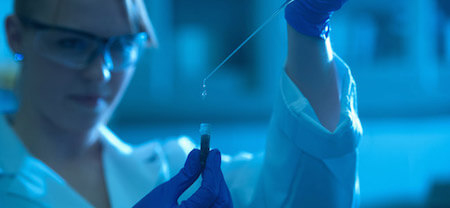You've probably seen a crime show on television, whether it be some version of "CSI" or something like "Criminal Minds" or "Sherlock". These shows have gained a lot of popularity in the last 10 years, and now anyone can feel like a forensic expert after watching a few hours of TV. There's no question that forensic science, such as the use of DNA to identify victims and criminals, has changed the way the criminal justice system works, but how much of what we see on TV is anything like real life?
Specialists
- On television, it always looks like either the police are doing every part of the investigating, forensic analysis, etc., or the crime scene investigators are taking full control.
- In reality, a crime scene is processed by a variety of individuals, who all have different jobs and schedules.
- These teams do work together to solve crimes, but it is perhaps more complicated than the average episode of CSI might make it seem.
- Some crime scene investigators aren't even police officers; they can be civilians who are trained in forensic science.
 Some crime scene investigators are scientists without a police background!Courtesy of forensics.psu.edu
Some crime scene investigators are scientists without a police background!Courtesy of forensics.psu.edu
Fingerprints
- You've probably heard that every fingerprint is unique to the individual, and that investigators can lift fingerprints from crime scenes, match them to an individual, and thus have evidence of that individual's guilt.
- Certainly, fingerprints are useful to investigators. However, they can be challenging to process.
- Professionals often use fingerprint powder, photography, or special lights to record fingerprints.
- These prints must then be compared to those in a database in order to match them.
- These days, this is mostly done using computers (saving a lot of tedious matching work). Fingerprint examiners usually need to double check computer results though, which can be a laborious process.
 Fingerprints have been used to solve crimes since the early 20th centuryCourtesy of Frettie
Fingerprints have been used to solve crimes since the early 20th centuryCourtesy of Frettie
DNA
- DNA is a material found in every cell in a person's body.
- It, even more accurately than fingerprints, absolutely unique from person to person.
- DNA testing began in the mid-1980s, and proved an invaluable tool for attaching a suspect to a crime.
- In fact, over 200 people have actually been released from jail after DNA evidence found that they were innocent.
- DNA can easily be left behind at a crime scene; it is present in hair, skin, saliva, and blood.
- DNA can be collected at a crime scene by the police or forensic investigators.
- What they don't tell you on TV, though, is how long DNA testing can take. It can take quite a while, sometimes weeks or longer, for DNA to be properly collected and tested.
 DNA is a molecule found in every cell of our bodies!Courtesy of fastcoexist.com
DNA is a molecule found in every cell of our bodies!Courtesy of fastcoexist.com
It's always interesting to compare fiction and reality, and to think about how much scientific advances (such as DNA testing) can effect our everyday lives. Fingerprint collection and analysis could be a fantastic science fair project, and these days you can even send mail-in DNA samples to see the genetic make-up of your dog! Think about it - science really is everywhere!
Have Your Say!
What do you think is the most helpful forensic science tool? Comment below and share with the other Kidzworld readers

































